Key takeaways:
- Awareness of selective mutism among educators can foster inclusivity and empathy, allowing affected students to feel seen and supported.
- Implementing non-verbal communication strategies can empower students with selective mutism to participate without the pressure of speaking.
- Parental advocacy is crucial, as proactive communication with teachers helps bridge gaps and create supportive networks for children.
- Personal experiences highlight the importance of understanding and adapting to the needs of students, demonstrating how simple gestures can significantly impact their engagement and confidence.
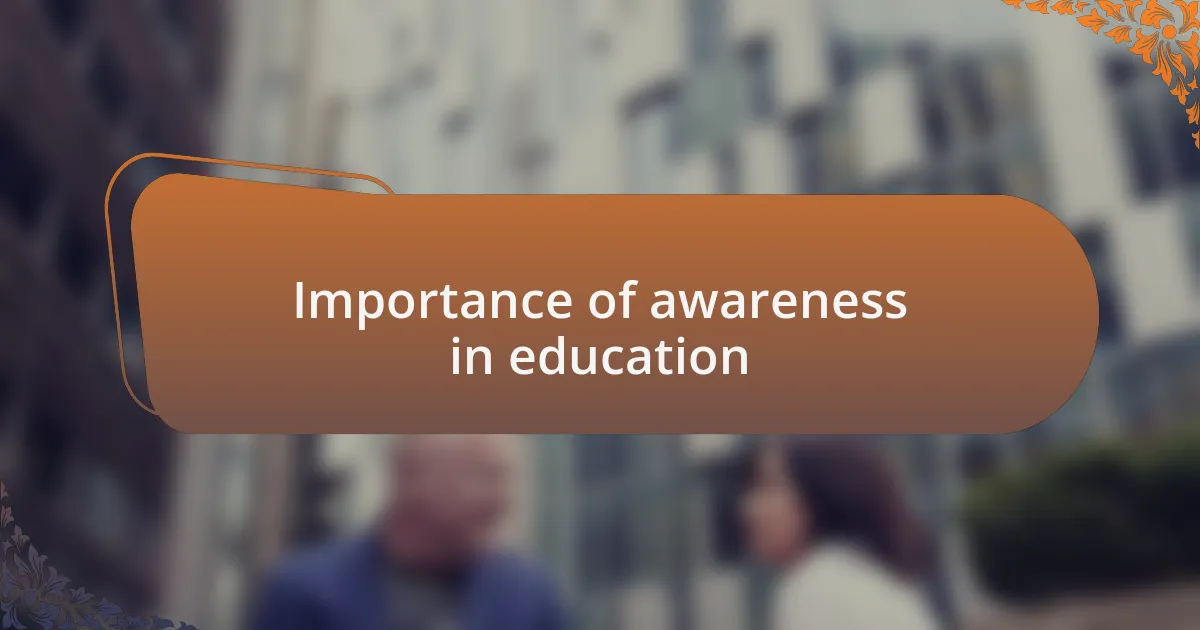
Importance of awareness in education
Awareness in education regarding selective mutism can reshape the way teachers and classmates interact with affected students. I remember a time when a child in my class struggled to participate, and it broke my heart to see her isolated. What if, instead of shyness, we recognized this as a condition that requires understanding and support?
When educators are informed about selective mutism, they create a more inclusive environment. I once watched a teacher adapt her methods by implementing non-verbal communication cues, which not only gave the student confidence but also enhanced the entire class’s empathy. Can you imagine a classroom where every child feels seen and heard, regardless of how they express themselves?
Furthermore, awareness fosters collaboration between schools and families, making it easier to develop strategies that meet individual needs. I vividly recall the relief on a parent’s face when they realized the school was willing to collaborate, resulting in tailored support for their child. Isn’t it incredible how understanding a condition can bridge the gap between home and school?
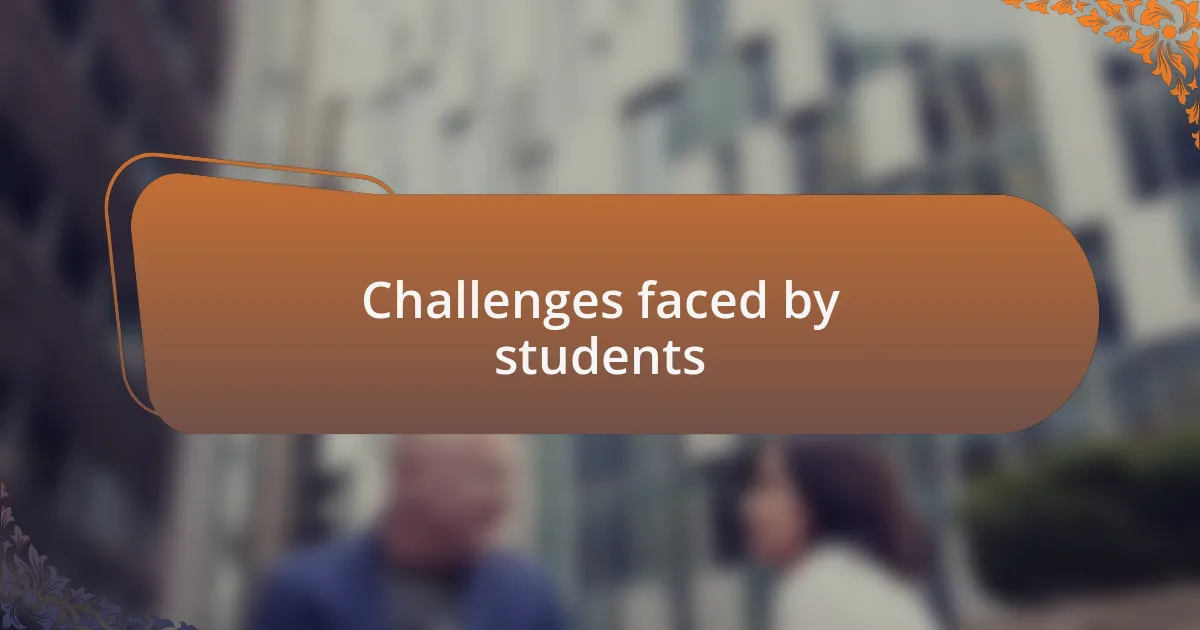
Challenges faced by students
Many students with selective mutism face significant challenges in daily interactions, particularly when it comes to speaking in class. I recall a student who would flush with anxiety when called upon, often retreating into silence instead of voicing her thoughts. It’s heartbreaking to think how a simple question can turn into an emotional hurdle, leaving these students feeling overlooked and misunderstood.
Social dynamics within the classroom can intensify their struggles. I’ve seen peers whisper and speculate about a quiet student instead of reaching out, which only deepens feelings of isolation. It makes me wonder, how can we foster friendships if we’re too quick to judge someone’s silence as indifference rather than a cry for connection?
Academically, the pressure to participate can be overwhelming, not just socially but also in terms of grades. I remember when a student I mentored choose to nod instead of respond, opting for the safe route despite having brilliant ideas. Isn’t it frustrating that their potential goes unrecognized simply because they are grappling with a condition? This lack of engagement can derail their confidence and hinder their academic journey in ways that extend far beyond the classroom.
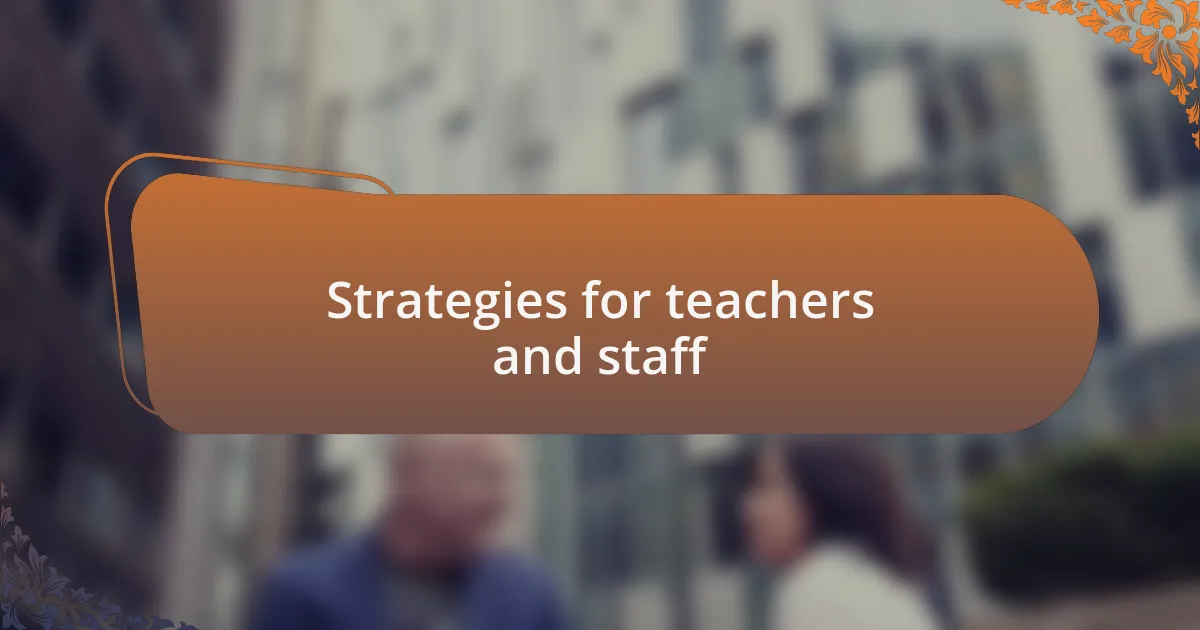
Strategies for teachers and staff
Creating an environment that supports students with selective mutism requires patience and understanding from teachers and staff. One effective strategy I’ve found is to establish non-verbal communication cues. For example, allowing students to use a system of hand signals to indicate when they want to participate can ease their anxiety. Isn’t it amazing how simple modifications can empower a child to express themselves without the pressure of speaking?
Building trust is crucial in helping these students feel comfortable. I once had a teacher friend who spent time engaging students one-on-one outside of class discussions. She began with activities like art projects where speaking wasn’t necessary. This approach not only fostered a sense of security but also revealed insights into their thoughts. Have you ever considered how much a little time and patience can change a child’s experience in school?
Incorporating collaborative group activities can also ease the pressure on students with selective mutism. I’ve seen remarkable moments when quiet students shine in smaller circles, where they feel less intimidated and more engaged. By creating mixed groups that highlight different strengths, teachers encourage mutual support. Isn’t it rewarding to watch those previously silent voices finally being heard when given the right context?
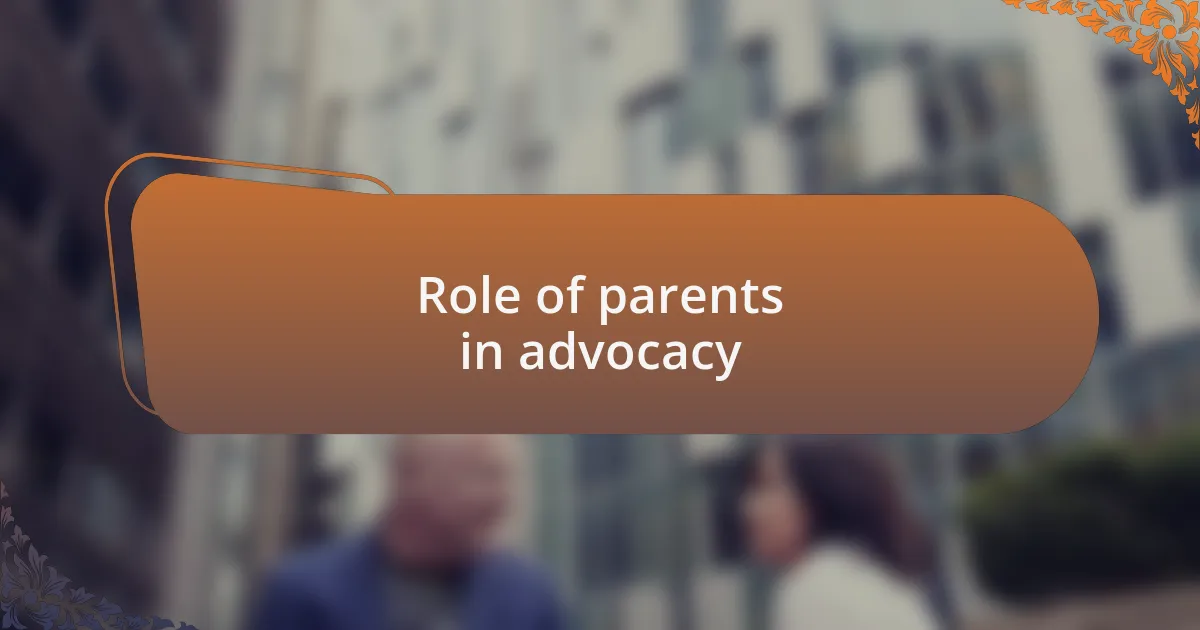
Role of parents in advocacy
The role of parents in advocating for their child with selective mutism cannot be overstated. Parents often hold vital insights about their child’s unique triggers and strengths. I remember when a friend of mine took the initiative to meet with her child’s teachers to explain these dynamics. It made such a difference. Have you ever noticed how effective communication can bridge gaps between home and school?
Being proactive is another essential aspect of advocacy. I once observed a mother who regularly checked in with both her child’s therapists and teachers to ensure everyone was on the same page. This kind of collaboration can create a consistent support network for the child. It’s amazing how a united front can empower a child to become more comfortable in their interactions, isn’t it?
Moreover, parents should advocate for resources that benefit their child. I know a father who organized workshops at his child’s school focused on selective mutism awareness. By engaging not just the teachers but the whole school community, he helped cultivate an atmosphere of understanding and acceptance. Doesn’t it make you think about the ripple effect one dedicated parent can have?
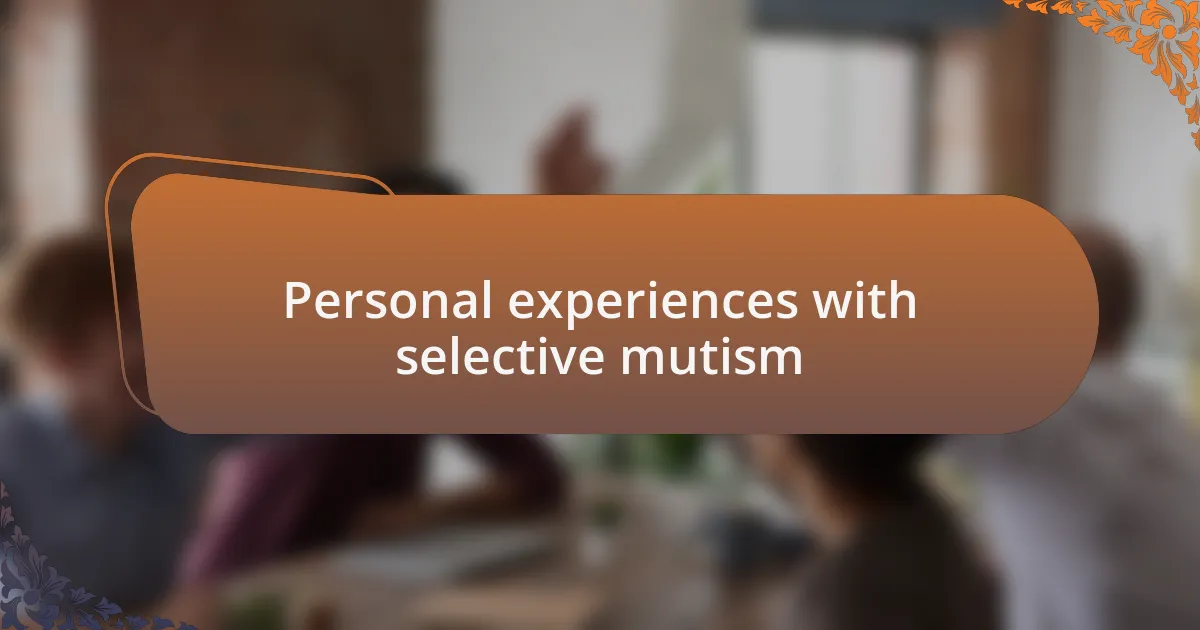
Personal experiences with selective mutism
Navigating my own experiences with selective mutism during school was a profound journey. I often felt an overwhelming sense of isolation in classrooms filled with chatter, where my voice seemed lost. It was during a group activity that a teacher finally noticed my struggle. She gently encouraged me to express my ideas through writing instead of speaking, which opened a door I never thought possible. Have you experienced a moment that shifted your perspective in a challenging situation?
There were days when even the thought of participating in class would cause my heart to race. I remember sitting quietly, wishing I could join in but feeling a paralyzing fear that gripped me. One day, a classmate asked me to share my thoughts on a project, and instead of shutting down, I managed to nod while scribbling my ideas. That small act of validation from a peer felt monumental. How often do we underestimate the impact of simple gestures in creating connections?
Over time, I learned the importance of self-advocacy. I recall a specific instance when I confided in a favorite teacher about my selective mutism. To my surprise, she offered to meet me halfway by introducing a ‘no-pressure’ sharing time during class. That moment made me realize anyone could understand and adapt to our needs. Isn’t it inspiring to know that communication can evolve into something uniquely supportive?